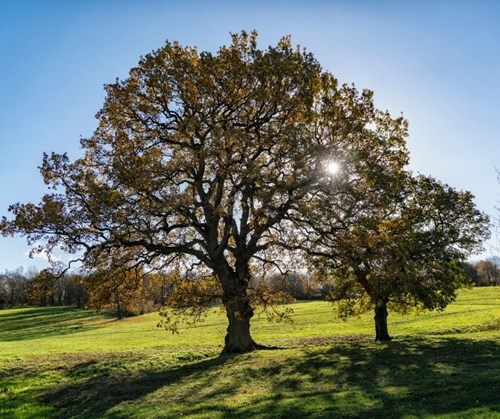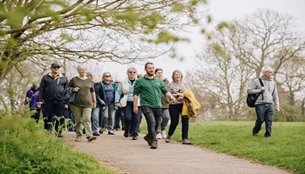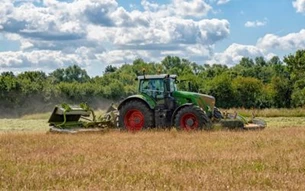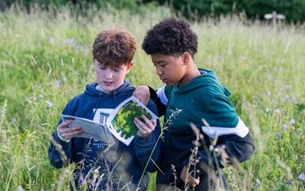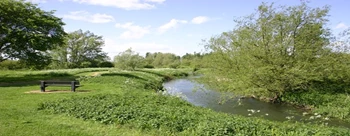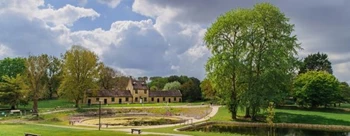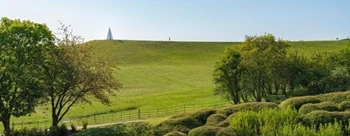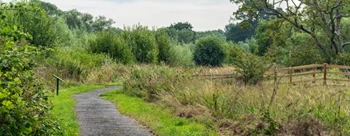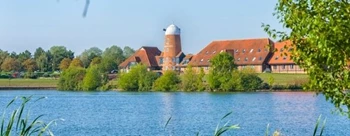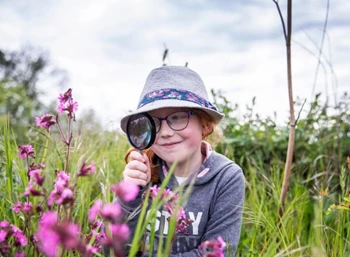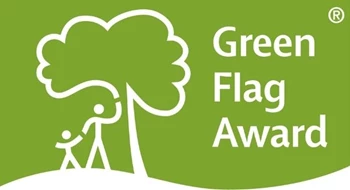Tree A Day
This National Tree Week we will be sharing a spotlight tree series on our social media where you’ll be able to learn about a new species of tree each day. Check back each day for the latest species to discover. We'll be sharing top facts and the best places to find that species in Milton Keynes!
Friday 4th December – Apple
Crab apple as well as domestic apple trees provide of food for humans and animals. While crab apples can be eaten on their own, they are also a useful ingredient in jams and jellies for their high pectin content.
Howe Park Wood is home to one of the oldest crab apple trees in the UK, you can identify this tree by looking out for its gnarled appearance, often thought to be the reason these trees have the name “crab.” Domestic apple trees are close relatives of the crab apple and are often planted in orchards.
Traditional orchards are great habitats for rare and endangered species such as great crested newts and dormice. Look out for their beautiful pink and white blossoms in spring.
Where to find them: Community Orchard at Woughton on the Green, Howe Park Wood, Linford Wood boundary, orchard near the brick kilns at Great Linford or the orchard at New Bradwell portion of Ouse Valley.
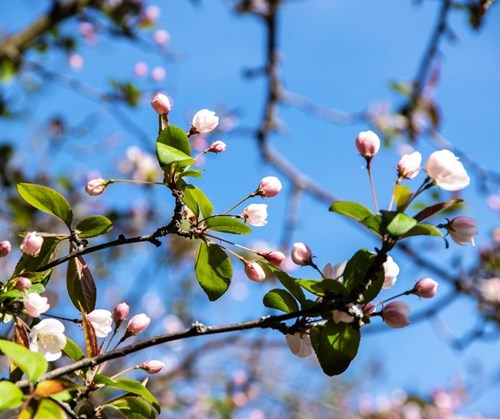

Thursday 3rd December – Horse Chestnut
Horse chestnut trees are not native to the UK. As a result, they are often ornamental trees in parks rather than integrated into woodlands. Their leaves are compound and are made up of 5 leaflets. You might notice dark spots on the leaves in summer and autumn, this is likely due to leaf minor moth larvae or leaf blotch caused by a fungus. While the larvae and fungus are typically not too harmful, infestations can weaken the tree overtime.
They are a firm children’s favourite for their conkers, but these seeds aren’t just used for fun, they can also make a natural soap. Remove the brown skin from 4 conkers, chop them up into smaller pieces, place in a mesh bag and pop in the washing machine as a substitute for laundry detergent.
Where to find them: Ouzel Valley Park, Stanton Wood or Great Linford Manor Park.
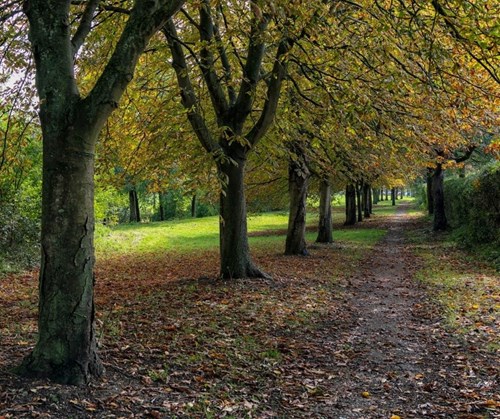
Wednesday 2nd December – Alder
Alder is the only native deciduous tree that grow cones. These trees are useful for their nitrogen fixing properties as well as their ability to prevent erosion along rivers and streams. Alder is an interesting tree as both male and female flowers are present on the same tree. Their roots create suitable nesting sites for otters!
Where to find them: Along streams and rivers, try Ouzel Valley Park or Ouse Valley Park, along the Canal Broadwalk or Campbell Park.
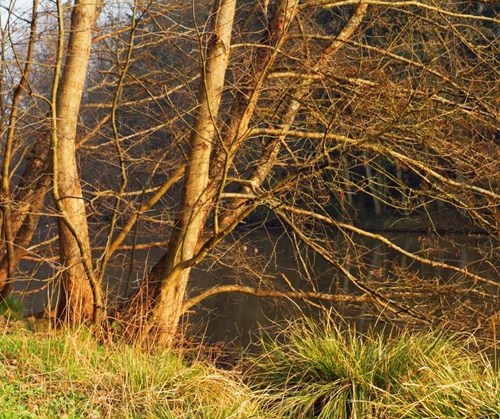

Tuesday 1st December – Hazel
Hazel has round, toothed, hairy leaves that are soft to the touch. It is very important as it creates a home for ground nesting birds, its nuts provide a food for animals as well as humans, and its wood is very useful.
Coppiced hazel can be found throughout many of our parks. This management technique creates layers of foliage, forming habitats for a wider variety of species and allows the tree to live much longer. While this is mainly for biodiversity purposes today, the wood was historically coppiced to as it is very flexible making it suitable for weaving.
Where to find them: Dispersed through any wooded area
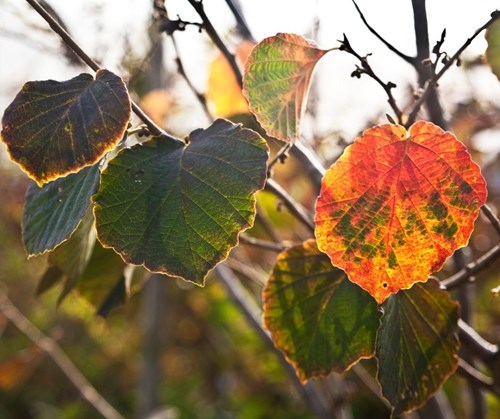

Monday 30th November – Birch
Birch trees are a sight to behold, with their drooping branches and white bark. The colour of their bark is due to a high concentration of the chemical betulin. The white colour reflects the sun’s heat in winter, protecting the bark from rapid warming. This allows the tree to thrive in very cold regions. This chemical is also waterproof and very flammable, making birch bark a great natural fire starter, even if it has been raining! These trees live a “rock and roll” lifestyle, they grow quickly and have a relatively short lifespan. They are often seen as a pioneer species as they tend to be the first tree to colonise a new woodland.
Where to find them: Tree Cathedral, Campbell Park or Hazeley Wood.
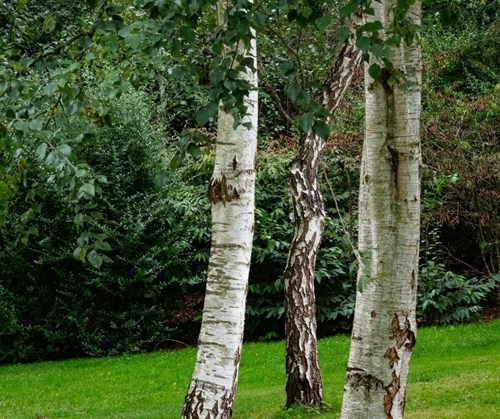
Sunday 29th November – Maple
The field maple is the only native maple species in the UK. You are also likely to see Norway Maple or Sycamore trees in our parks as well. Maples are great trees for cities as they are tolerant to pollution and they turn vibrant colours in autumn. They are important trees as their nectar provides a food source for a variety of insects.
Field maple is often used as hedging as it can tolerate strong winds. They are also a delicious trees as their sap is used to make maple syrup! It takes about 40 litres of sap to make 1 litre of syrup.
Where to find them: Most parks have a mixture of the different species, visit Stony Stratford Nature Reserve, Campbell Park woodland ridge, Stonepit Fields, Hazeley Wood, Caldecotte Lake South or Joan’s Piece at Stanton Low Park.
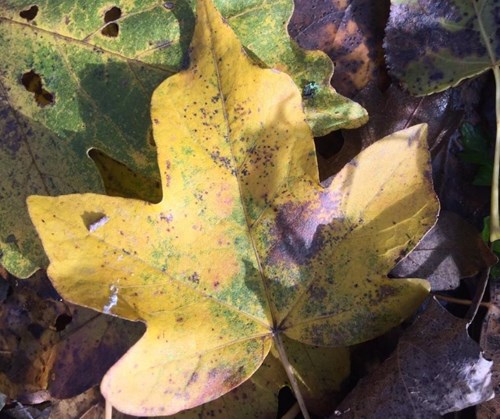
Saturday 28th November – Oak
First up, is the mighty Oak, one of the UK’s most iconic tree species. Oak trees are some of the most common trees around Milton Keynes. There are two different native oak species: English oak and Sessile Oak. There are also a few non-native oaks commonly found across the UK as well.
Oak trees are very important as they provide a home for more species of wildlife than any other tree. This year was a particularly good year for acorns (the nuts that grow on oak trees) and so we are asked the people of MK to collect and plant them to help us grow trees for Milton Keynes’ ancient woodlands. Find out more here.
Where to find them: most of our parks contain oak trees but in particular you could visit any of our ancient woodlands to find some very old oak trees, Campbell Park or the centre of the Labyrinth at Willen Lake North.
